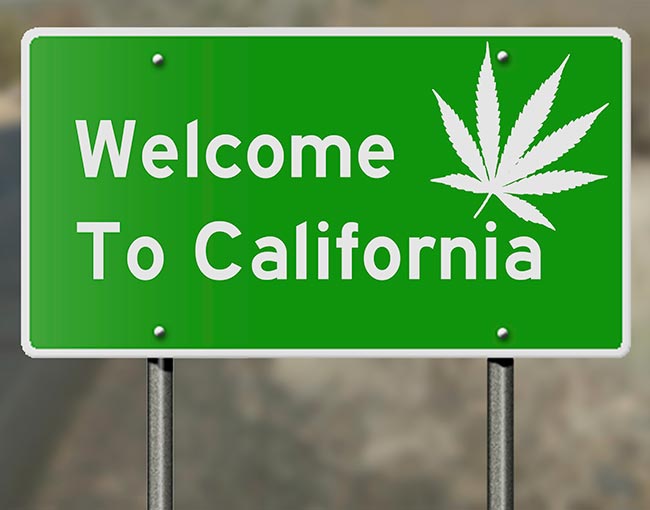Many advocates for cannabis reform laws in California believe that 2016 is the year that recreational cannabis will become legal in the state. As many as 60 state initiatives have been authorized to move forward and circulate for signatures, and 20 ballot measures have been filed. Since California’s failure to legalize the recreational use of cannabis under Proposition 19 in 2010, Colorado, Washington, Oregon and Alaska have passed laws legalizing the recreational use of the drug and an additional nine states have legalized the use of cannabis for medical purposes.
Ballot process
Despite the vast competition, the proponents of these competing measures all have at least one common goal: getting a legalization measure on the November 2016 ballot. For an initiative to qualify for the November ballot, promoters must collect 365,880 petition signatures from registered voters. Under California law, if more than one measure qualifies on the same issue, the measure with the most votes overall will go on the ballot. So long as one measure qualifies, it seems fairly certain that recreational marijuana will be on the ballot this year.
Adult Use of Marijuana Act
The Adult Use of Marijuana Act (AUMA) is a 62-page initiative backed by former president of Facebook and founder of Napster, Sean Parker. Partially due to the financial backing of Sean Parker, AUMA has emerged as the top contender to get on the state ballot in November. The initiative has raised approximately $2.25 million and was recently endorsed by the National Organization for the Reform of Marijuana Laws (NORML), one of the oldest cannabis reform associations in the country. Other endorsements include the Marijuana Policy Project, California Cannabis Industry Association, Drug Policy Alliance and California NAACP. 2018 governor-hopeful Gavin Newsom, who chaired a blue-ribbon commission to determine the best way to legalize recreational cannabis in California while also limiting minors’ access, targeting crime and regulating the safe cultivation and distribution of cannabis, has also thrown his support to AUMA.
Below is a summary of the key components of AUMA’s provisions and restrictions.
The Basics
- Adults over the age of 21 would be able to lawfully possess, transport, process or obtain no more than one ounce of cannabis.
- Adults would be allowed to cultivate up to six plants and possess the cannabis from these plants at their residence for personal use.
- Adults would be able to smoke or ingest cannabis provided that it is unlawful to do so in any public space except for licensed dispensaries.
Regulation and Oversight
- Licensing would begin January 1, 2018.
- The Bureau of Marijuana Regulation created by the Medical Marijuana Regulation and Safety Act (MMRSA) would be renamed the Bureau of Marijuana Control and be given chief authority to regulate the cannabis industry in California.
- Similar to MMRSA, this new Bureau of Marijuana Control would be responsible for licensing transport, distribution and sale while the Department of Food and Agriculture would remain responsible for licensing cultivation and the Department of Public Health would remain responsible for licensing manufacturing and testing.
- The measure establishes 19 separate licensing categories corresponding to those in the MMRSA.
- Licensing of adult use facilities would be discrete from the licensing of medical use facilities.
- Licensing priority would be given to applicants who can demonstrate compliance with the Compassionate Use Act since Sept. 1, 2016.
- Local governments would still have final authority to regulate the number of licenses issued or to ban the issuance of cannabis licenses altogether within its jurisdiction.
Vehicles/Driving
- Consumption or possession of an open container of cannabis or cannabis product would be forbidden while driving or riding as a passenger in a motor vehicle.
- Only transport of sealed containers would be allowed and the bill contemplates that businesses could apply to be licensed and operate as legal cannabis delivery services.
Medical Use
- AUMA does not alter the protections of the Compassionate Use Act of 1996 and provides further that physician recommendations must conform to minimal standards already established under the MMRSA.
- Patients with state ID cards issued pursuant to MMRSA would be exempt from the 7.5 percent sales tax on cannabis sales.
Taxation
- All retail sales, including medical, would be subject to a 15 percent sales tax in addition to the regular state sales tax as of Jan. 1, 2018.
- Medical use patients with valid state ID cards would be exempt from the current 7.5 percent sales tax.
- All cannabis would be subject to additional cultivation taxes, as well as any additional tax imposed by local cities and counties.
Social Justice Reform
- Felony drug offenses related to cannabis possession and sale would now be legal or reduced to misdemeanor offenses.
- The initiative provides a process for those incarcerated for offenses that would now be legal or misdemeanors to get resentenced and have their sentences reduced or rescinded.
















